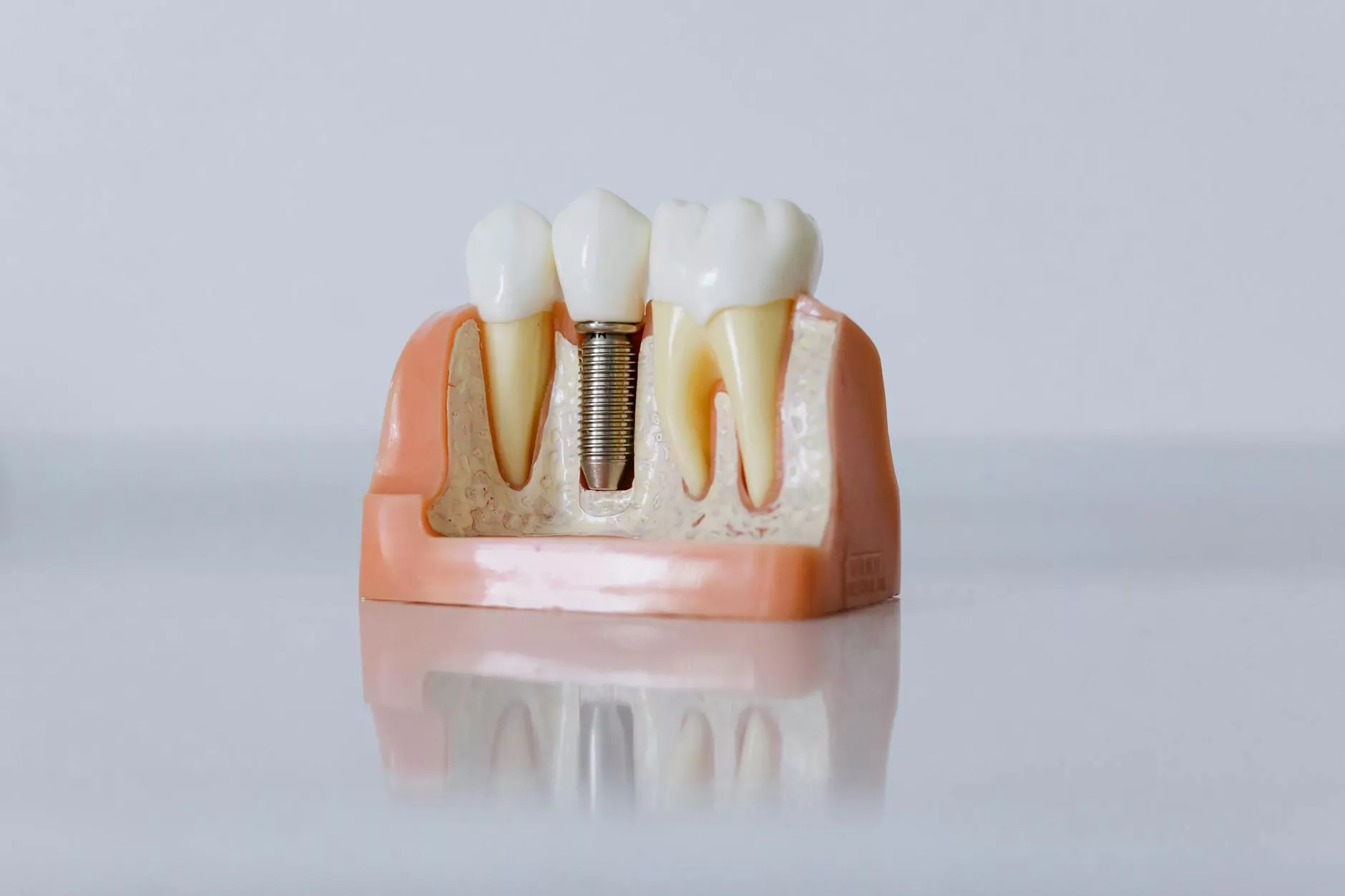Understanding Bad Dental Implants: Causes, Consequences, and Solutions

Dental implants have revolutionized modern dentistry by offering patients a permanent solution to tooth loss. However, not all dental implants are created equal, leading some individuals to experience negative outcomes. This article delves deep into the realm of bad dental implants, examining their causes, consequences, and the potential solutions available for those affected.
What Are Dental Implants?
Dental implants are titanium posts inserted into the jawbone where teeth are missing. They act as artificial roots, providing a strong foundation for replacement teeth. The process typically involves several steps:
- Initial Consultation: Assessment of oral health and bone structure.
- Implant Placement: Surgical insertion of the titanium post.
- Osseointegration: Healing phase where the bone fuses with the implant.
- Abutment Placement: Connecting piece for the prosthetic tooth.
- Crown Installation: Final restoration placed on the abutment.
Understanding Bad Dental Implants
Despite their high success rates, complications can arise, leading to bad dental implants. Understanding what defines a bad dental implant is crucial for both patients and practitioners.
Characteristics of Bad Dental Implants
- Implant Failure: The implant becomes loose or does not integrate with the jawbone.
- Infection: Occurs when bacteria invade the site, potentially leading to peri-implantitis.
- Implant Fracture: Mechanical failure of the implant itself due to extensive stress.
- Misalignment: Incorrect placement leading to bite issues or aesthetic concerns.
Causes of Bad Dental Implants
The occurrence of bad dental implants can be attributed to several factors. Each aspect plays a significant role in the overall success of the implant procedure.
1. Inadequate Bone Structure
One of the most common reasons for bad dental implants is insufficient bone density in the jaw. Without enough bone, the implant cannot support the prosthetic tooth properly, leading to instability or failure. In some cases, bone grafting may be recommended prior to the placement of the implant.
2. Poor Surgical Technique
The skill and experience of the dental surgeon significantly influence the success of the implant. Poor surgical techniques can lead to issues such as:
- Incorrect placement of the implant
- Damage to surrounding structures such as nerves or sinuses
- Increased risk of infection
3. Infection and Peri-implantitis
Infections post-surgery are a prevalent cause of complications. Peri-implantitis is characterized by inflammation of the tissue surrounding the implant, which can lead to bone loss. Factors contributing to infection include:
- Poor oral hygiene
- Smoking
- Diabetes and other systemic diseases
4. Material Complications
Not all dental implants are made from the same quality materials. Low-grade titanium or other inferior materials can lead to bad dental implants. Always ensuring quality materials are used can help mitigate these risks.
Consequences of Bad Dental Implants
The ramifications of having a bad dental implant can extend beyond just physical discomfort. Understanding these consequences is vital for anyone considering implants.
1. Physical Discomfort and Pain
One of the most immediate issues people face with bad dental implants is chronic pain. This can manifest as:
- Ongoing soreness around the implant site
- General discomfort in the jaw
- Severe pain during chewing or biting
2. Bone Loss
Failure of an implant often leads to further bone resorption in the jaw. This not only jeopardizes future implants but can also affect facial structure, leading to a sunken appearance.
3. Aesthetic Issues
Poorly placed implants can result in noticeable aesthetic problems, such as misaligned or unnatural-looking teeth. This can affect a person’s confidence and social interactions.
4. Financial Implications
Addressing complications from bad dental implants often requires additional procedures, leading to increased dental bills. Replacement implants, bone grafting, or corrective surgeries all come at a significant cost.
Identifying Bad Dental Implants
Recognizing the signs of bad dental implants early can prevent further complications. Patients should be vigilant for the following symptoms:
- Loose implants: If an implant feels loose or wobbly.
- Swelling and redness: Indicators of infection or inflammation.
- Persistent pain: Discomfort that doesn’t subside with time.
Preventing Bad Dental Implants
While complications can occur, there are several measures that patients can take to minimize risks:
1. Choose a Qualified Dental Professional
The experience and expertise of the dental surgeon must be paramount. Look for a credentialed and experienced dentist specializing in dental implants. Consider checking reviews and asking for referrals.
2. Comprehensive Pre-treatment Assessment
Ensure a thorough examination of bone quality and overall oral health. Imaging studies, such as X-rays or CT scans, may be necessary to evaluate suitability for implants.
3. Maintain Excellent Oral Hygiene
After receiving dental implants, maintaining exceptional oral hygiene is crucial. Regular brushing, flossing, and dental check-ups can help prevent infections and ensure long-term success.
4. Lifestyle Choices
Avoid smoking and heavy alcohol use, both of which can impair healing and jeopardize dental implants. Additionally, a healthy diet rich in vitamins and minerals supports overall oral health.
What to Do If You Suspect Bad Dental Implants
If you suspect that you may have bad dental implants, it is essential to act promptly. Here’s what you should do:
1. Consult Your Dentist
Do not delay reaching out to your dentist. They can perform a thorough evaluation and identify any issues early on.
2. Seek a Second Opinion
If you feel unsure about your dentist's assessment, seeking a second opinion, preferably from an implant specialist, can provide further insights.
3. Explore Treatment Options
Depending on the situation, there are multiple pathways to address bad dental implants, including:
- Implant removal and replacement
- Bone grafting if substantial bone loss has occurred
- Antibiotic treatments for infections
Conclusion: Navigating the Complexities of Bad Dental Implants
While dental implants can profoundly improve oral health and quality of life, it is critical to be aware of the potential for bad dental implants. By understanding the causes, recognizing the signs, and taking preventative measures, patients can significantly reduce the likelihood of complications. If issues do arise, seeking timely professional help can enable effective interventions, transforming potential problems into encouraging outcomes. Ultimately, staying informed and choosing qualified professionals can pave the way for a successful dental implant journey.
For more information or to find solutions surrounding dental health, visit us at wupdoc.com.








